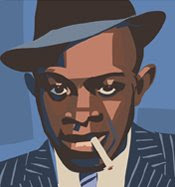A: So many readers have failed to complete Don Quixote, this book advertises the possibility on its cover. Now you too can "Complete Don Quixote"! And because I finished my adaptation of the book, something that seemed unlikely at times. Other adaptations have failed to complete Don Quixote, not naming any names, you know who you are.
Q: But you missed some bits out so it's not complete is it?
A: Yeah, yeah, shut up. It's nearly 300 pages of comics, you could knock someone out with that lush hardback edition (only £19.99 from good stockists and a paltry £15 for a signed one at Thought Bubble!). And I have added as much as I've taken away, this is the graphic novel not the novel novel. Cervantes would have loved comics as they can demonstrate his crazy ideas with an ease that cuts through age gap. Given how different shaped our brains are now*, one could even claim that the Complete Don Quixote will give one a more complete experience of the story.
*There is no science to support this assertion.
Q: How so?
A: Here is an example from Volume Two, Chapter Four (a personal favourite)...
The mad knight, having escaped a wedding punch up, uses his idiot squire who has consumed much of the wedding feast for ballast as he leaps into the dreaded Cave of Montesinos.
After half an hour, Sancho drags his friend back up.
Quixote's tale is rather abstract, we switch to his point of view with a change in style.
As you can see, there is some discrepancy between Quixote's version of events and the probability that he just fell asleep.
This experience has changed his mission.
Brilliant! A true knight's adventure! Sadly they are immediately distracted by a man dragging a cart who tells them of an impending war. Again, the switch of style lets us into the polite farce that began this war. Now whether we're in Quixote's imagination, Sancho's imagination or the storyteller's imagination matters not - by now we are familiar with the comic clues to a story within a story.
And back in the inn the man completes his story in person.
Or at least he would do but for the arrival of another storyteller in the shape of the Puppeteer, Master Pedro, and his psychic monkey.
And once again we enter the comic story within the comic story as Master Pedro's puppets play out the story of another brave knight who would also rescue his fair maiden. But this time the comic page is a puppet theatre and the characters are puppets.
Turn the page.
A: I suggest you read the book. And so does the title.
















![[huzzahnoir2.jpg]](https://blogger.googleusercontent.com/img/b/R29vZ2xl/AVvXsEhfLdDLBBPfTSXRPWrnWAtBD0aOZCN-zriqioFPJjPJkoxY_aiXqD070FccoLIdFOmwjNgUsYhjDfS9Rby_Ma7JXa-i5imDIl2Ytku1_gMjs3jRgRlOJMALTP_pDI6ovoek8_Uhz-zi7Eum/s1600/huzzahnoir2.jpg)